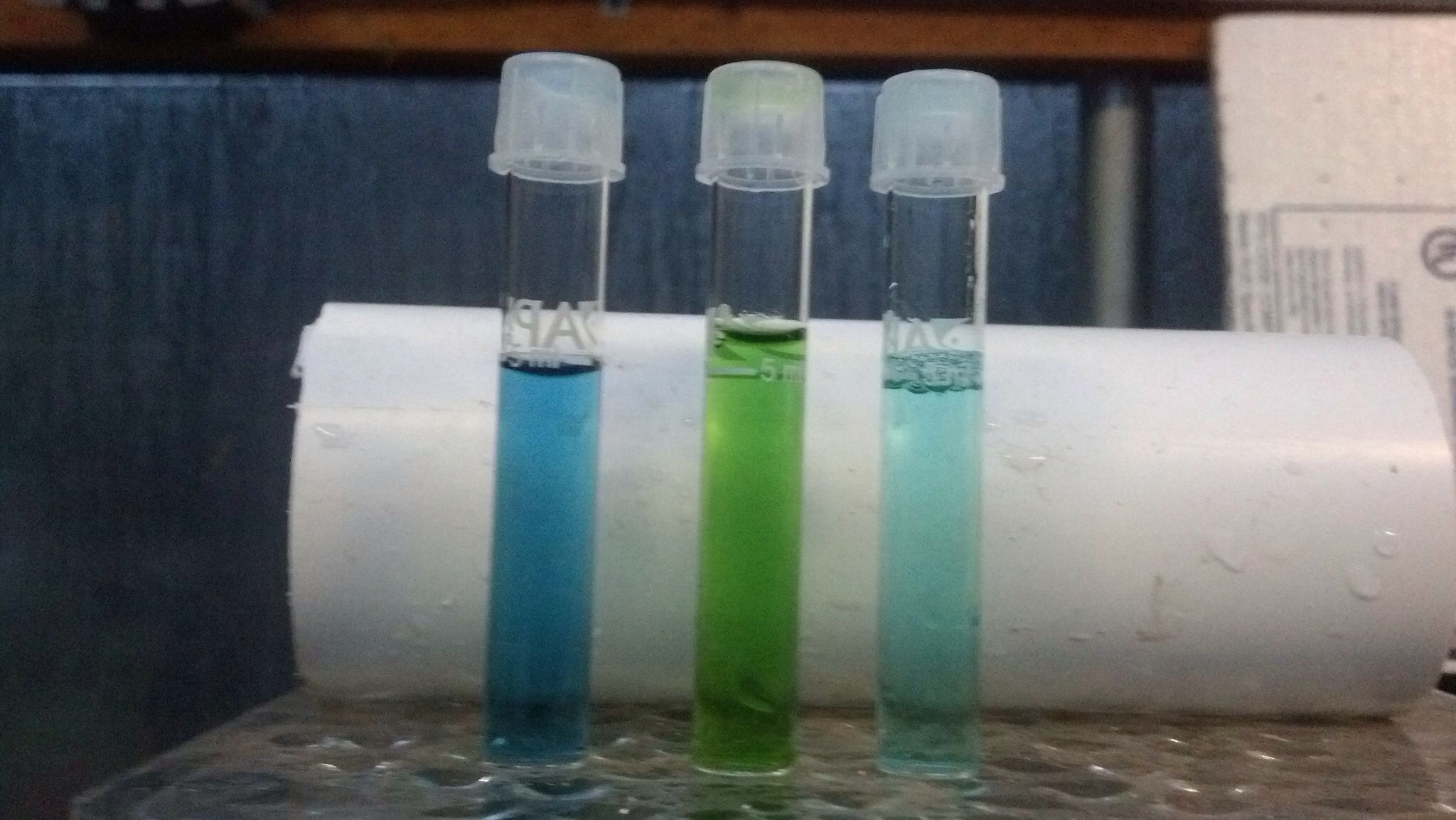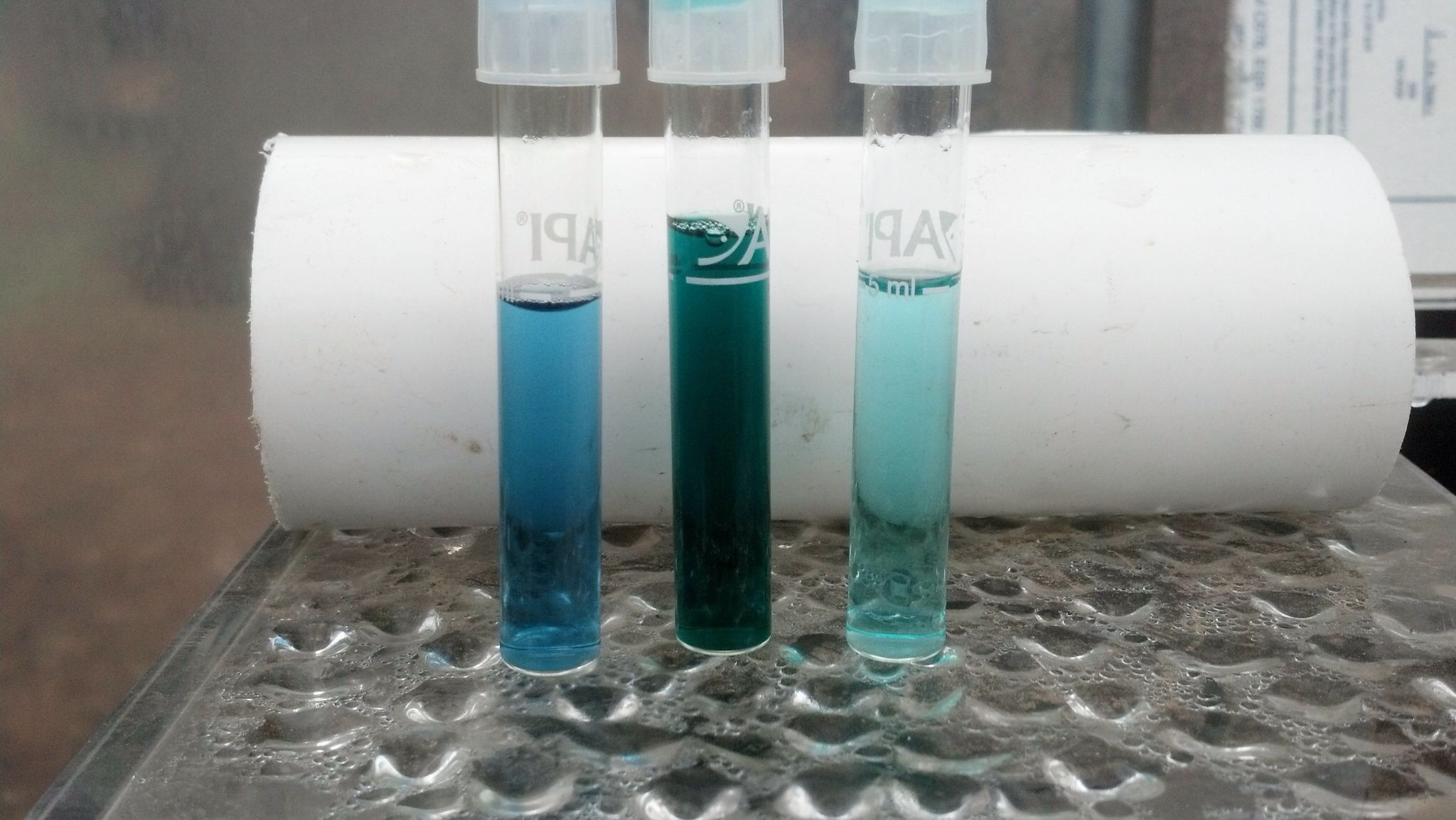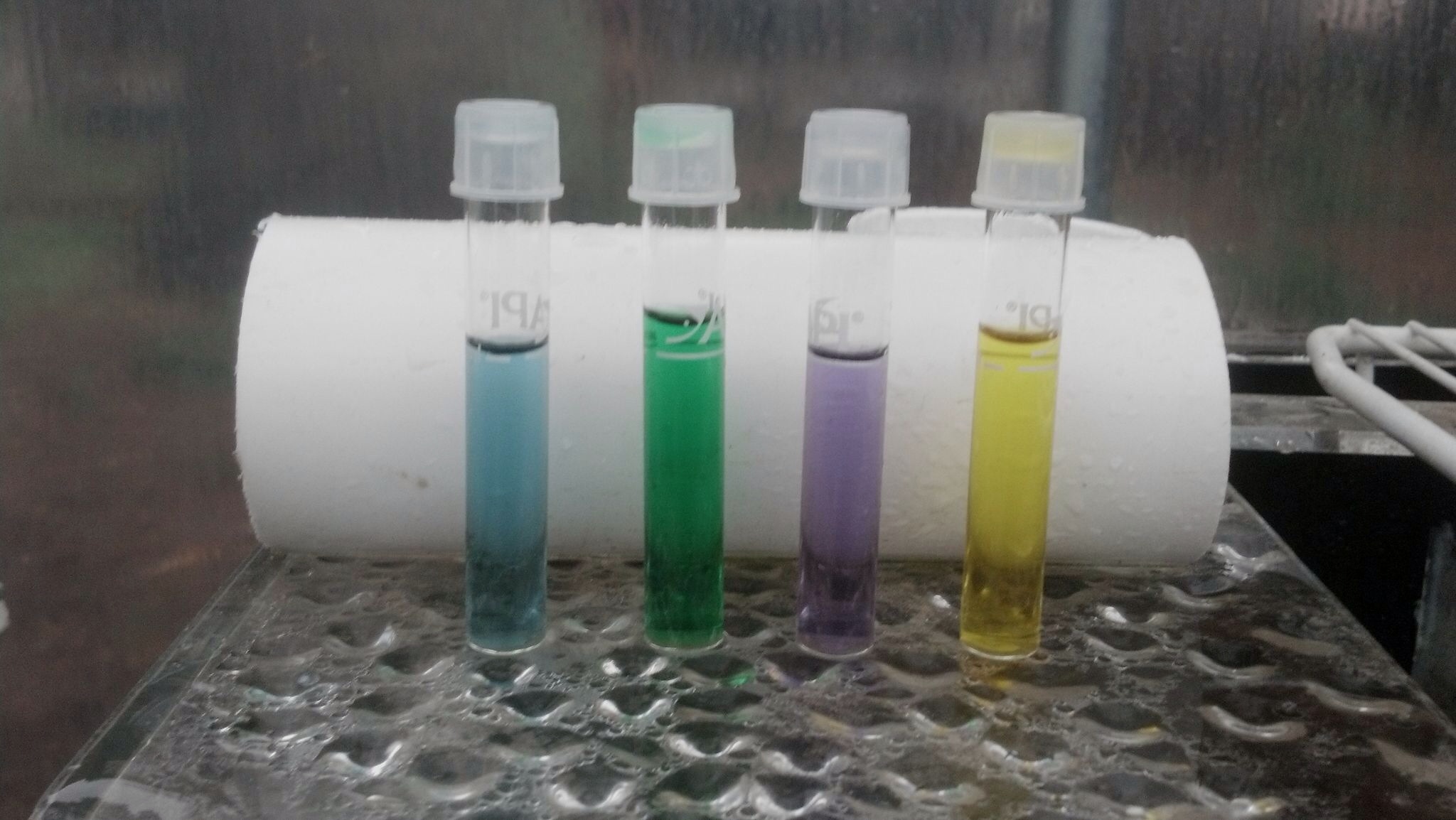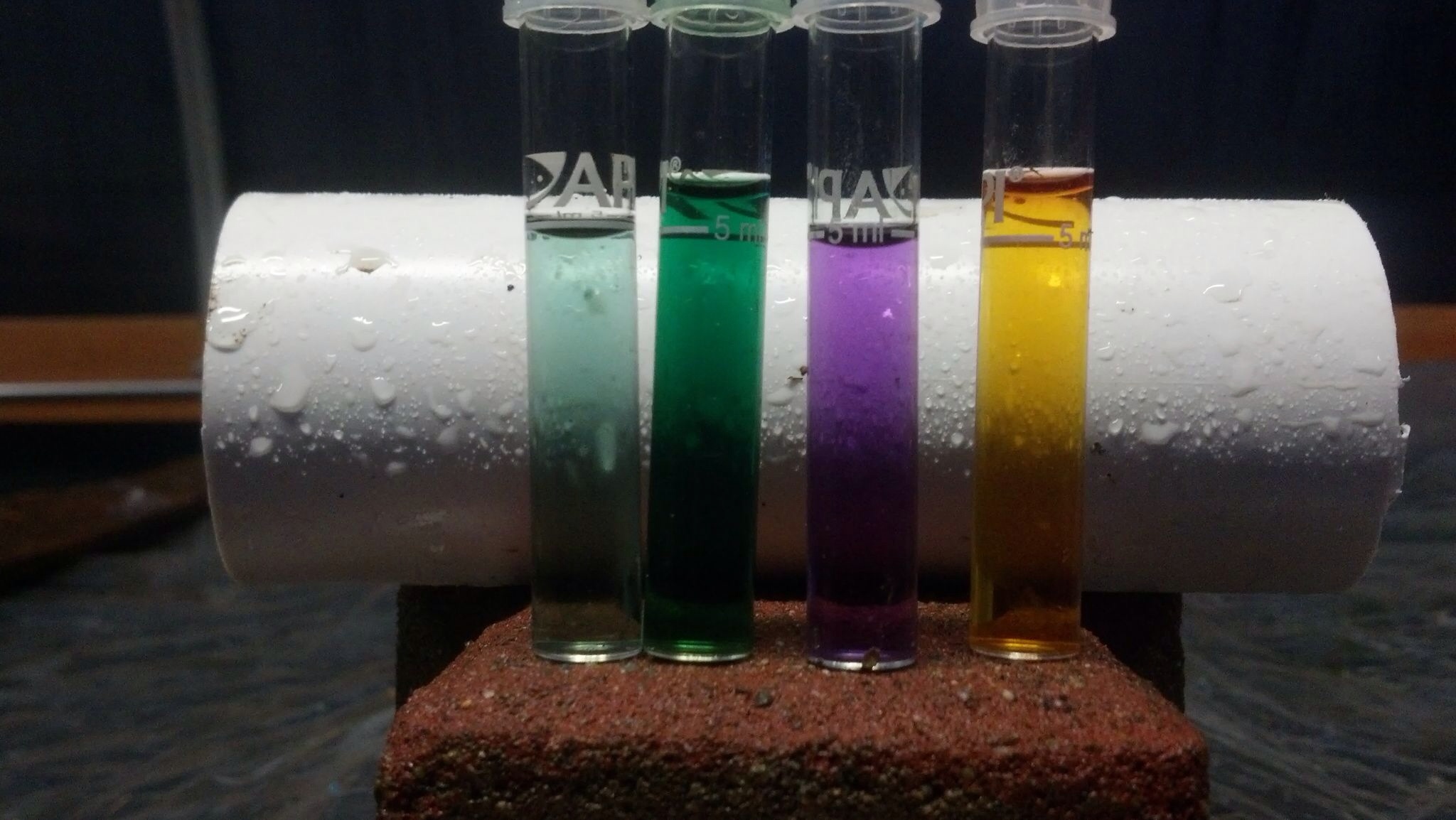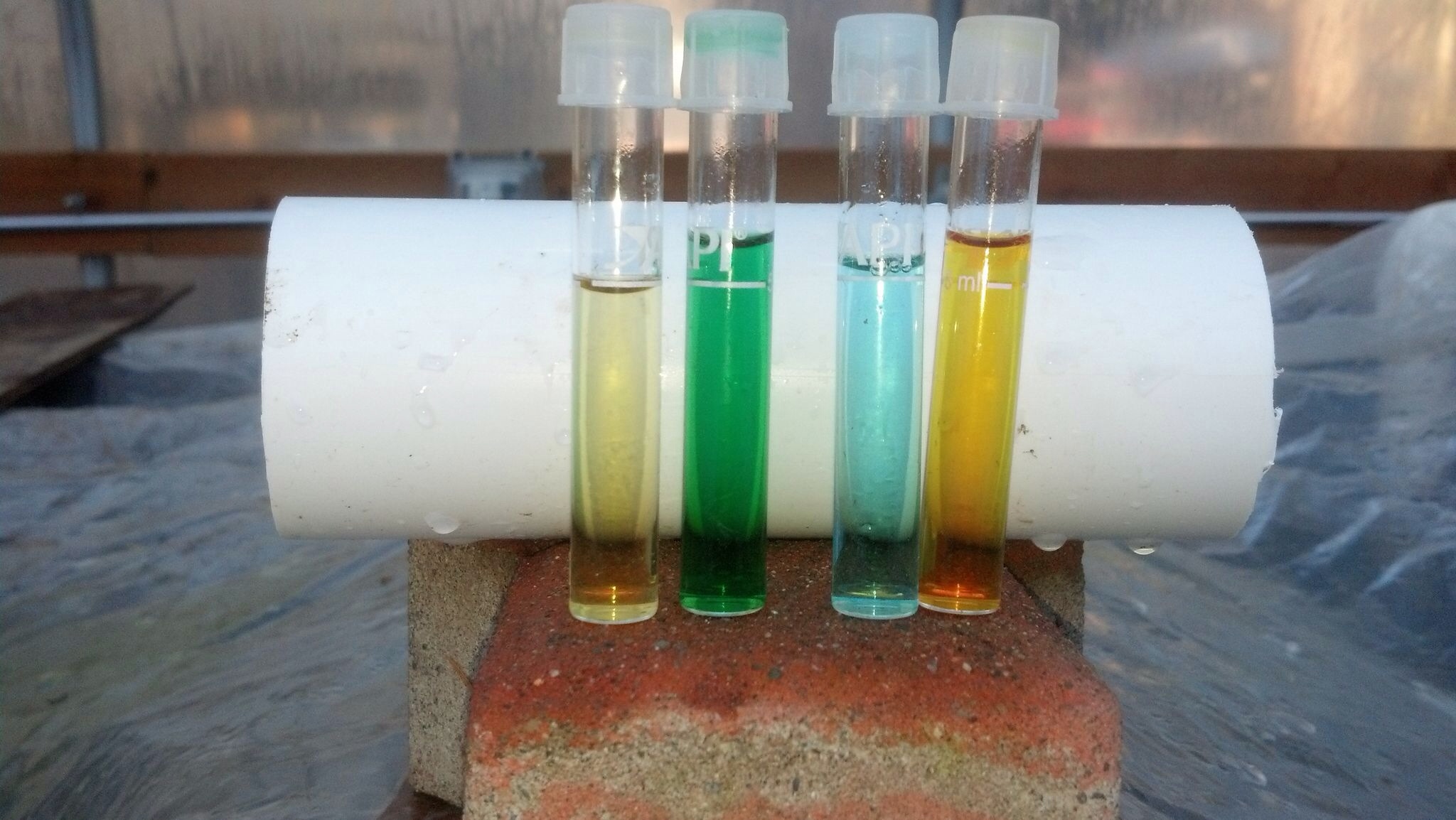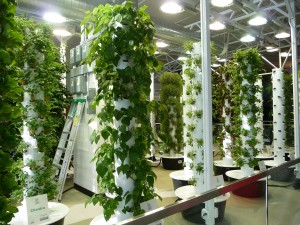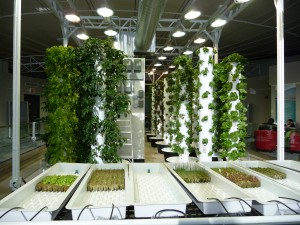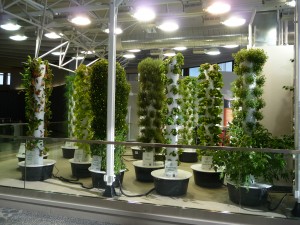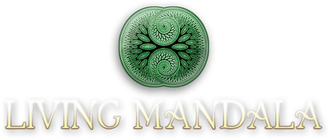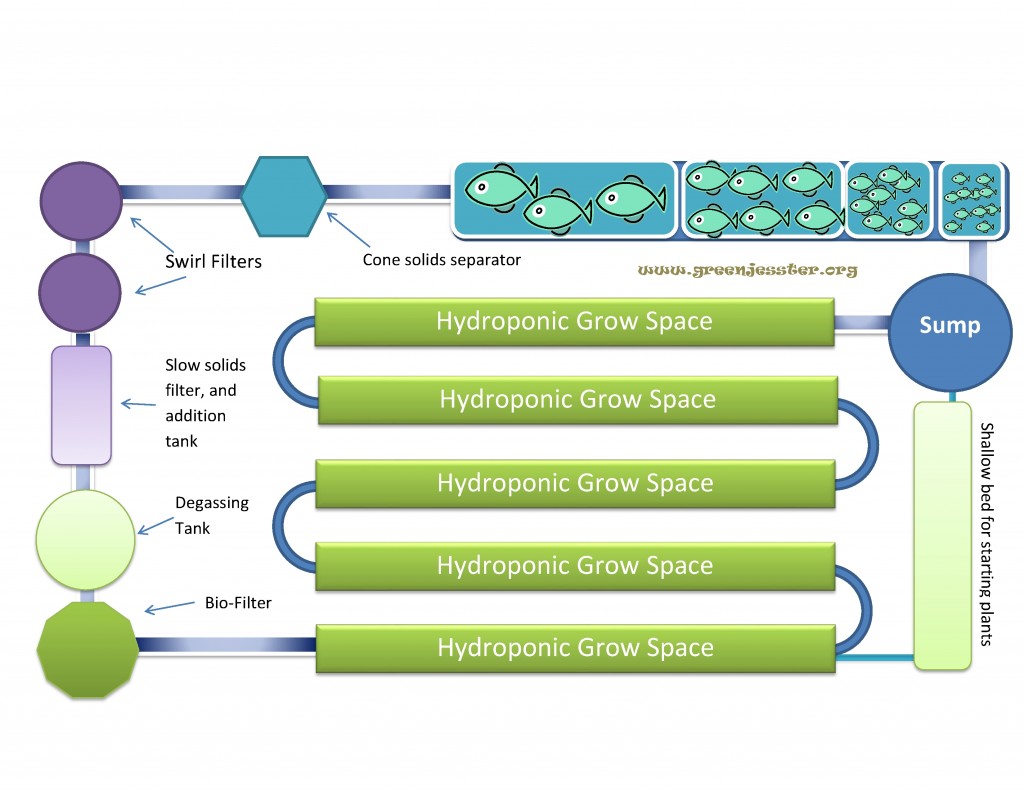I started cycling for this system by using powdered ammonia. It worked pretty well. I wanted to share what my test kit looked like over the month.
This is what it started out looking like. Although nitrates and ammonia are flipped from how they will appear in the rest of the post.
So currently it shows test tube #1 PH is pretty high, above 7.6. Tube #2 nitrites are at 0. Tube #3 ammonia and tube #4 nitrates are both at 0.
Doing a little better now, PH is coming down ammonia is added, nitrites are still at 0
Ph looks good here about 7.2ppm. I over added ammonia, should have mixed it in a bucket and added it slowly rather than adding it directly, it took time for the ammonia to dissolve and mix fully. Nitrites is still at zero. At this point no reason to test for nitrates.
Hooray! First population of nitrifying bacteria are present. Due to the change the water becomes more acidic, Lowering the Ph. Tube #2 the ammonia is still really high, if I had fish in this would be a serious hazard. But tube #3 shows the presence of nitrites! This indicates nitrosomonas bacteria are present in enough quantity to convert ammonia to nitrites. Nitrates however at this point are at 0.
This shows that the ammonia is dropping and the nitrites are rising but still no detectable nitrates.
Finally the nitrates are rising! This can be seen by the last tube turning orange. Tube #3 is deepening purple showing a higher level of nitrites. With fish in the system this would have been toxic. You can also see that the Ph is still dropping, this can be buffered by adding builders lime.
After buffering with builders lime the Ph is back in normal range Tube #1. Ammonia is dropping in Tube #2. Nitrites are rising in Tube #3. And now in Tube #4 the nitrates are rising which indicates a healthy population of nitrobacter.
Here the nitrates in Tube #4 are dropping due to them being utilized by the plants as food. Ammonia in tube #2 is still high but there is no detectable nitrites in tube #3. I believe this is due do the Ph dropping too low which put the nitrosomonas bacteria into a hibernating state. Which you can see in the yellow color in tube #1.
Here you can see the nitrates in tube #4 are still rising and the ammonia in tube #2 are still dropping. There are still no detectable nitrites. But I don't believe that this means they weren't present but rather the being converted quickly to nitrates. Even at this low Ph the nitrobacter bacteria are still doing great.
Finally the system is fully cycled! Tube #1 the Ph is 6.8, Tube #2 the ammonia is almost to zero, Tube #3 nitrates are down to zero and the nitrates are high. (later finding my nitrate test kit is a little off, so they aren't quite as high as it looks)
Chicago Aeroponics Garden!
GreenJesster : January 16, 2012 2:52 am : Aquaponics, Articles, ResourcesOn my way back from holiday travels I saw signs for the O’hare Int Airports new Aeroponics garden, the O’Hare International Airport Eco-Farm. Very cool site indeed, supplies produce for restaurants in the airport. Check out the project website
I had a lot of questions going in to this phase of research about how to supply the needed nutrients to the system without having to buy chemical substances. I haven’t found a lot of resources online or otherwise about this. Max Meyers had quite a few ideas…
Snails, crustaceans, prawn shells can be dried and fed to fish to increase calcium, or ground into a fine powder and added directly to the system. Shells can be added to the filter to allow calcium to leach into the system as needed. Chicken manure as well as other bird droppings can be added directly or composted and added to supply potassium and phosphorous. Iron can be supplemented by creating comfrey tea. Allowing the leaves to soak in water for a week, strain/drain and then add the water to the system. As well as seaweed, dehydrate the plant matter and then crush and soak in water for a week, then straining the solids from liquid and adding the water directly to the culture water. Other dynamic accumulators can be used, the same plants that leave nutrient residues in the soil for other plants to consume can be used in aquaponics as an additive. Blood can also be used to add iron to a system. Rusty nails do not produce the right kind of iron and should be avoided.

I had estimated about 50 crops would do well in aquaponics systems, lettuce, basil, tomatoes, and strawberries were all expected plants. I did not expect it would be possible to grow carrots in aquaponics, not only do they grow but they flourish in a media bed, as well as fruit trees including bananas and avocadoes. Over 280 plants, vegetables and fruits are currently being successfully cultivated in aquaponics systems around the world! I was amazed I had no idea about the versatility of aquaponics! Those of you who have systems up and running what have you been successful at growing? What didn’t work for you?

One of the complaints about tilapia is that they are low in Omega-3’s. I had assumed this was due to their diet. Most aquaculture and even most aquaponics systems feed their fish corn and soybean based fish foods. Yuck! This means GMO fish food. There are organic feeds on the market, but even most of those still use corn and soy. Cows shouldn’t eat corn and soy, neither should pigs, surely corn is not a naturally occurring food for fish! Omnivorous fish will eat commercial food if trained to, not that this makes it good for them or those who in turn eat the fish. Fish can be fed flax seed as part of their diet which increases their Omega 3’s. Fish can process and absorb more of the flax seed than we can. We can absorb more of the benefits after it has become part of the fish than taking flax seed on its own. Fish food can be made of; black soldier fly grubs, duckweed, water hyacinth, water lettuce, worms, and even worm castings! Flax seed, wheat grass, smaller fish, snails and bugs can also be utilized. Food scraps can also be fed to some fish after being dehydrated. Algae can be grown or scraped off tank sides and then combined with other ingredients after being dehydrated to for super food! There are many opportunities to close the loop further growing the fish feed yourself rather than using cheap commercial food while at the same time increasing the health of your fish and producing higher quality food.

systems are still my favorite, I learned more about the possibilities of a raft system. Malaysian prawns can be grown in the bottom of a deep culture or raft tank. These prawns grow fast, clean detritus and algae from the roots of the plants and can be eaten. Also growing small minnows or guppies under the rafts is also a good option. They reproduce quickly, require little food and can be used as food for omnivores or carnivorous fish. Raft systems also require less cost to build and less labor at all stages of production. Starts are easier to plant in a raft, easier to remove and replant. During harvesting all of the roots are easily removed from the tank, where as in media beds lots of roots are left in the media which can lead to clogging and anaerobic growth. Root and soil fungi and diseases are greatly reduced by using the raft method. Also in a raft culture the root temperature is stable which leads to faster healthy plant growth. By insulating the raft tank heat can be retained in the system, and for plants that need a warmer climate for growth, keeping the roots warm and at a constant temperature the plants can be grown out of season. Also in a deep culture tank an even distribution of nutrients can occur as well as more even distribution of dissolved oxygen.
I enjoyed collaborating on three different projects over the last few months. Which includes designing, planning, budgeting and getting approved the soon to be on campus aquaponics system. I also attended a Commercial Aquaponics with Applied Permaculture Training Course. It was fantastic, the connections and networking alone was worth the time and expense, plus the instructor Max Meyers was amazing! It was exciting to hear someone so passionate about aquaponics, permaculture, and social justice speak and teach for a week. It was also energizing to hear someone who has been designing and running aquaponics systems for a long time come to the same conclusions as I have, coming up with the same solutions for fish food, waste reclamation, and alternatives to chemical additives. I am uplifted, recharged and ready to start moving into the construction and management phase.
Check out Max Meyers website:
Living Mandala, they have courses and trainings in
permaculture, aquaponics, biogas and more!
Continuing to close the loop in Aquaponics
GreenJesster : March 9, 2011 1:33 pm : Aquaponics, ArticlesIt is becoming necessary to consider the inputs and outputs of our production systems. As resources become more expensive and less available, our designs need to be more efficient. Bi-products need to be seen as valuable resources and reused or repurposed as many times as possible. Our food production systems are no exception. Food cannot be grown in isolation, nutrients have to be provided and plant wastes have to be disposed of. Food production systems such as Aquaponics can be incorporated into sustainable closed loop systems.
In an aquaponics system the interactions between the basic three components are easy to understand. The fish produce wastes which are broken down by bacteria; the bi-products of this process are available nutrients which are utilized by the plants grown in the system. These plants can include vegetables, fruiting plants, rice, grains, herbs and medicinal herbs. In this type of system many of nutrients are lost, as well requiring a lot of outside inputs. Input of nutrients such as fish food and water additives, for plants, has to originate from outside the system. They have to be manufactured, processed, shipped and purchased before these inputs can become part of the nutrient cycle. Wastes from this system include plant matter, fish solids, and leftover fish parts. There are many different ways that fish production can become a closed loop system; by developing systems to utilize principals of biomimicry; reproducing natural plant and animal relationships in our food system designs.
The next step is find a way to utilize wastes from this system. Decaying unusable plant matter, including the root mass can be reused in a few different ways. Some fish will nibble certain plants, retaining the nutrients in the system. One of the problems with feeding fish vegetable scraps is that large pieces of plant matter settling on the bottom can start anaerobic processes which cause ammonia spikes. Chickens could also be included in this food production system. Chickens really like leafy greens; they could also be used to retain some of the nutrients in this cycle. The remaining plant matter they discard or won’t consume can be composted.
Plant matter can be composted three main ways. Plant matter can be composted in the normal pile fashion and later used as a soil additive. Plants and food scraps can be broken down by worms; this is referred to as vermiculture. Red worms are grown in bins and fed food scraps; they do an amazing job at breaking down these plant wastes. The red worms are prolific and will multiply quite quickly in the bins; these worms can then be fed to fish or chickens. The worm poop, also known as castings is held at high value in horticulture as a soil additive. Compost tea or Vermi-tea is a liquid produced during the breakdown of plant and food wastes which is high in nutrients and microbial activity. This compost tea can be used as a soil additive, sometimes added back into the aquaponics system or sold.
Another option is Black Soldier Flies, Hermetia illucens, referred to as BSF. BSF larvae are basically eating machines, they are amazing living composters. They do a job similar to red worms but can break down waste products worms cannot handle. Hard to break down nutrient rich wastes including; fish, chicken, swine, and cattle manures can be consumed and broken down by these heavy feeders. Black fly larvae have shown in studies that they “reduce the nutrient concentration and bulk of the manure residue, thus reducing pollution potential 50-60% or more.” (Williams 2005) BSF cultivation has potential in other areas of food production dealing with wastes. BSF larvae can also consume meat. In an aquaponics system they could be utilized to process dead fish, as well as used to breakdown the fish remains after harvesting. When these BSF larvae reach the most nutrient rich and fat stores of their life cycle they self-harvest and separate themselves from the rest of the colony. This makes collecting them an easy process. These little digestion machines are great protein and fat source for other components of our food production system. They can be fed to chickens as well as fish. They can be frozen for later use as well as ground and processed into a component in fish food. They can even be processed to separate the oils fats to create biodiesel, even after the oil is extracted the remaining matter can still be used as a major component in fish food.
After the Black Soldier Fly larvae process the compost, the remainders can be put into a vermiculture system. Wastes that normally would be toxic to the red worms can now be safely be broken down by the worms. This is just another step in making this a closed loop system, BSF larvae breakdown wastes that are later fed to worms, this one link in the system produces Black Fly Larvae and worms, both which can be fed to chickens and fish. In addition this step produces soil additives and helps cut down on wastes produced.
The other fish food that can be grown quite readily is duckweed. It is fast growing, easy to cultivate. Since it floats on the surface of the water it is easy to harvest with a net. One component in an aquaponics set up is a settling tank. Solids are left in culture water to allow for more mineralization to occur. Using one of these tanks duckweed can be grown and harvested and the nutrients returned to the fish. Duckweed alone is not a good fish feed but when combined with the fat and protein from BSF, it can become another way to keep nutrients in the loop.
In this system chickens would be eating left over greens from the floating grow beds, sharing BSF and red worms with the fish, and then producing eggs and manure. The manure will be turned into BSF food, then vermi-food, then into a soil additive. After the eggs have been eaten the shells are returned to the system and added to one of the filter tanks to slowly leech calcium into the system. Another link in the aquaponic cycle is calcium, normally added to an aquaponics setup to help foster plant growth. Calcium can be added through prepared mixtures or by adding oyster shells or egg shells. Using egg shell closes one more loop in the system.
Observing systems already in place in the natural world provides insight into how to design sustainable food production systems. As in this example; growing food including fish, chickens, eggs, fruit and vegetables can all be part of one system which mimics natural processes. Each part of the system helps to maintain another portion of the cycle, each able to flourish because of the support of the other system components. This type of design approach needs to be used in all areas of our production and consumption. This type of system is just one way to approach sustainability.

